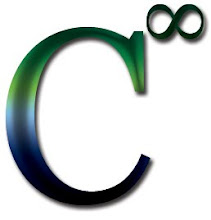*****
Some folks have asked me how exactly the Carbon MicroCredits monetization system would work, so I outlined the steps below:
CARBON MICRO CREDITS (CMC) Flow of Funds -- an illustration
All company names and $/Euro amounts are for illustrative purposes only.
(1) An industrial company in Europe such as a coal-fired power plant contracts for and/or pre-pays for Euros 1 million of carbon offsets from the European Climate Exchange (ECX). The offsets will be produced by the villagers as described below. Large European industrial users buy millions of dollars of offsets per year.
(2) ECX takes a commission of 5 % = Euros 50,000.
(3) EcoSecurities, which structured the project and provided the credits to ECX, takes a commission of 5 % = Euros 50,000.
(4) The remaining Euros 900,000 is wired to the Project Coordinator (PC) on the ground in India or Africa. The coordinator could be an NGO, a for-profit company or a charity.
(5) The Project Coordinator buys Euros 400,000 of cell phones/handsets and matching solar or efficient charcoal cookers, and distributes them to the participating villagers in the project.
(6) The Project Coordinator wires Euros 450,000 to the local cell-phone service provider such as Safaricom, MTN or China Mobile, which converts the Euros to cell phone minutes, say 1 million cell-phone minutes.
(7) Euros 50,000 is retained by the Project Coordinator for its own administrative expenses and to pay the misc. 3rd parties such as the carbon project auditing company (e.g., Det Norske Veritas or Tuev Sued AG).
(8) Every day the villagers dial in and claim their Carbon Micro-Credit (CMC) using their unique cell phone # and unique cooker serial #. The claiming process is menu-driven and fully automatic, so transaction costs are almost zero. Software safeguards at the cell-phone service provider allow each cell # to claim only one CMC/day.
A CMC can be arbitrarily defined, for example, as the daily CO2 not emitted by more efficient cooking = approximately 20 lbs. of CO2/day, worth about 15 - 25 cents/day = 10 cell-phone minutes/day [pick any economically reasonable number based on the local cell-phone service provider's cost structure].
The villagers should be required to buy their cell phones and cookers over time using the first XXX CMCs they claim. E.g., with the first 100 days of CMCs = 100 days x 25 cents/day = US$ 25.oo. Or pick another reasonable amount. People the world over appreciate things more that they pay for.
(9) After having paid off their equipment, cell phone minutes or CMCs earned could also be redeemed for local currency (cash) if the cell-phone service provider agrees. The provider should -- as they were paid Euros 450,000 cash in advance. Using a software platform such as that of Obopay.com (Redwood City, Calif.), the cash/currency could be sent by cell-phone text messages to any other person in the world having access to a cell phone.
Alternatively, as originally envisioned, the villagers can keep their cell-phone minutes and use them as currency to buy goods & services, as is already done in Africa, India and China.
(10) Every month or quarter the carbon project auditor verifies that the carbon offsets were indeed produced and certifies the same to the original buyer in #1 above. EcoSecurities and ECX are also notified. Or, the auditor could notify EcoSecurities, and then EcoSecurities would notify all other necessary parties. And the circle is complete.
Note that NO charity is required for this markets-based process to drive itself.
---------------------------------------------------------------
Sunday, October 26, 2008
Subscribe to:
Posts (Atom)
